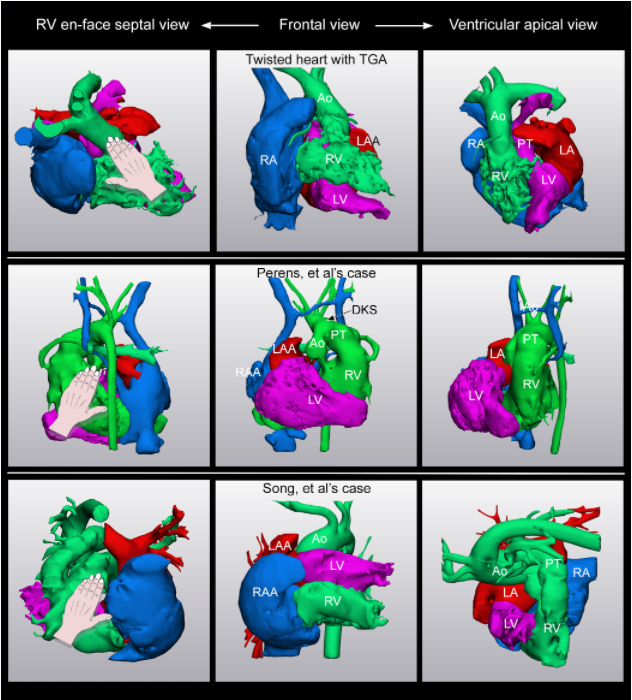 Open Access
Open Access
EDITORIAL
Disharmonious Ventricular Relationship and Topology for the Given Atrioventricular Connections. Contemporary Diagnostic Approach Using 3D Modeling and Printing
1 Department of Diagnostic Imaging, Hospital for Sick Children, University of Toronto, Toronto, Canada
2 Division of Cardiology, Department of Pediatrics, Labatt Family Heart Centre, Hospital for Sick Children, University of Toronto, Toronto, Canada
3 Biosciences Division, Newcastle University, Newcastle-upon-Tyne, UK
* Corresponding Author: Shi-Joon Yoo. Email:
Congenital Heart Disease 2022, 17(5), 495-504. https://doi.org/10.32604/chd.2022.021155
Received 05 February 2022; Accepted 01 August 2022; Issue published 06 September 2022
Abstract
In the last issue, two case reports separately present examples of the extremely rare and complex congenital heart diseases that show concordant atrioventricular connections to the L-looped ventricles in the presence of situs solitus. Both cases highlight that the relationship between the two ventricles within the ventricular mass is not always harmonious with the given atrioventricular connection. Such disharmony between the connections and relationships requires careful assessment of the three basic facets of cardiac building blocks, namely their morphology, the relationship of their component parts, and their connections with the adjacent segments. 3D imaging and printing can now facilitate an otherwise difficult diagnosis in such complex situations. Rotation of either the 3D images or the models permit accurate assessment of the ventricular topologic pattern by creating the right ventricular en-face septal view, thus facilitating placement of the observer’s hands. As we now emphasize, an alternative approach, which might prove more attractive to imagers, is to rotate the ventricular mass to provide the ventricular apical view, thus permitting determination of the ventricular relationship without using the hands.Graphic Abstract

Keywords
Cite This Article
 Copyright © 2022 The Author(s). Published by Tech Science Press.
Copyright © 2022 The Author(s). Published by Tech Science Press.This work is licensed under a Creative Commons Attribution 4.0 International License , which permits unrestricted use, distribution, and reproduction in any medium, provided the original work is properly cited.


 Submit a Paper
Submit a Paper Propose a Special lssue
Propose a Special lssue View Full Text
View Full Text Download PDF
Download PDF Downloads
Downloads
 Citation Tools
Citation Tools